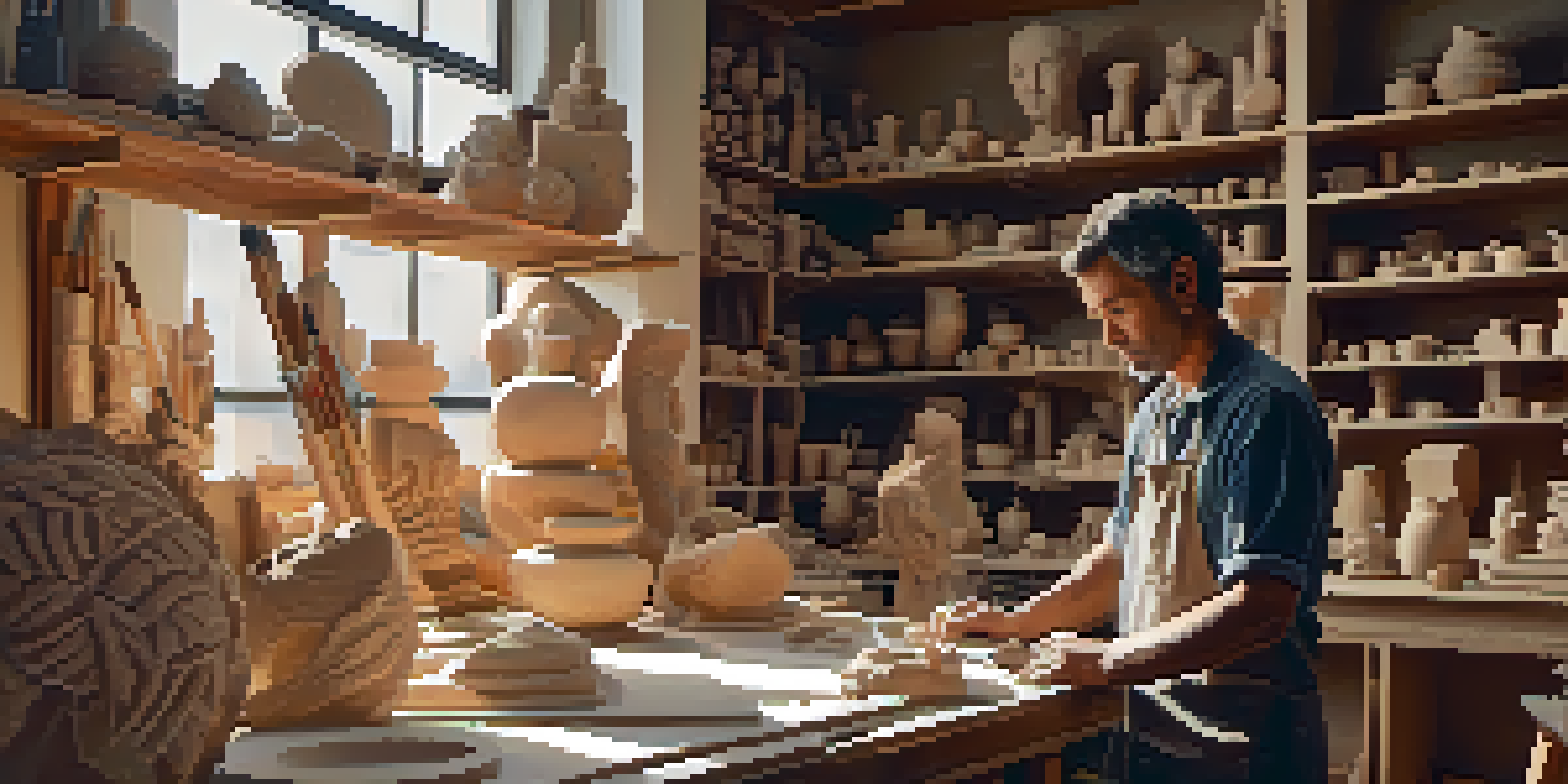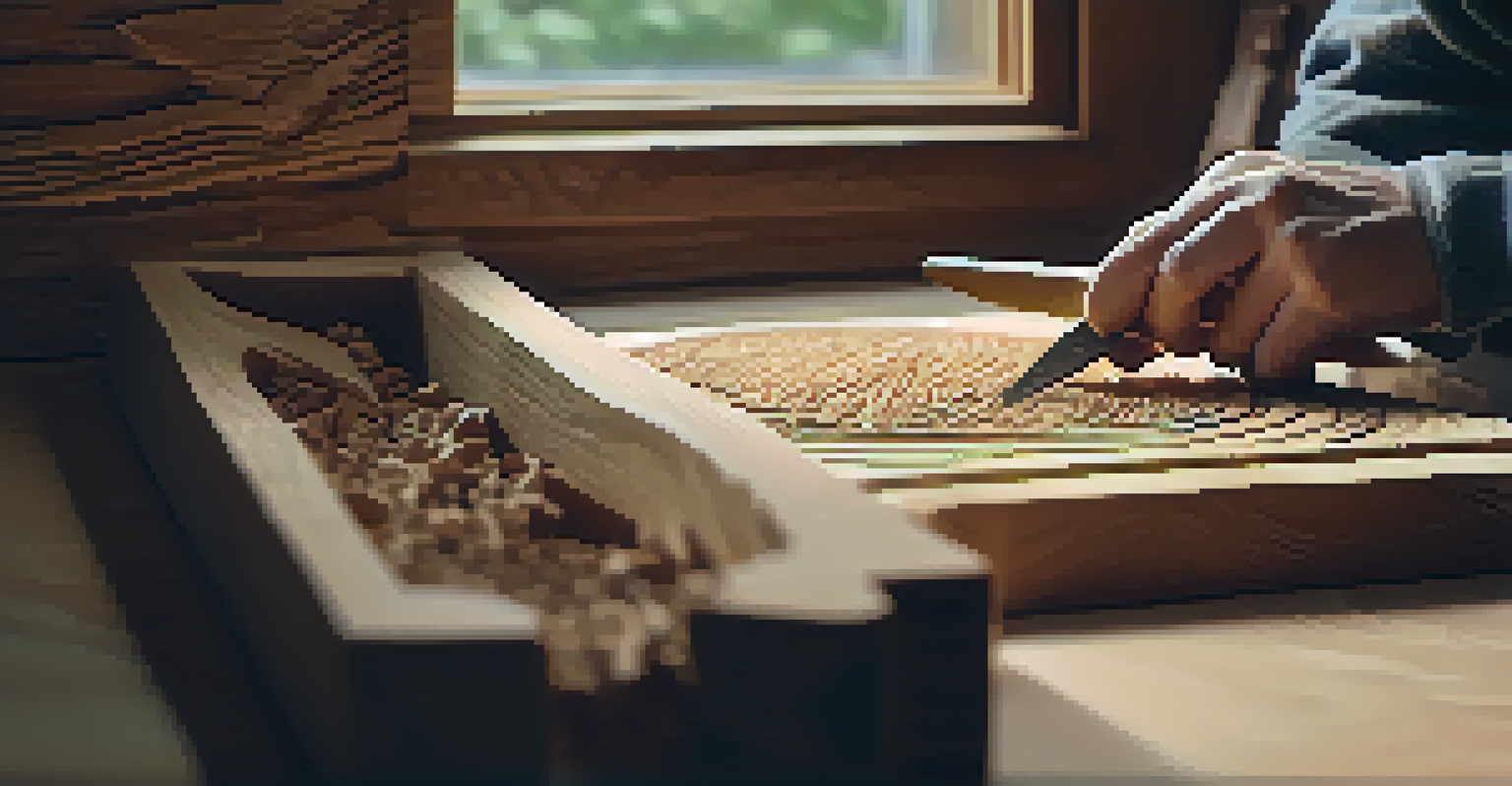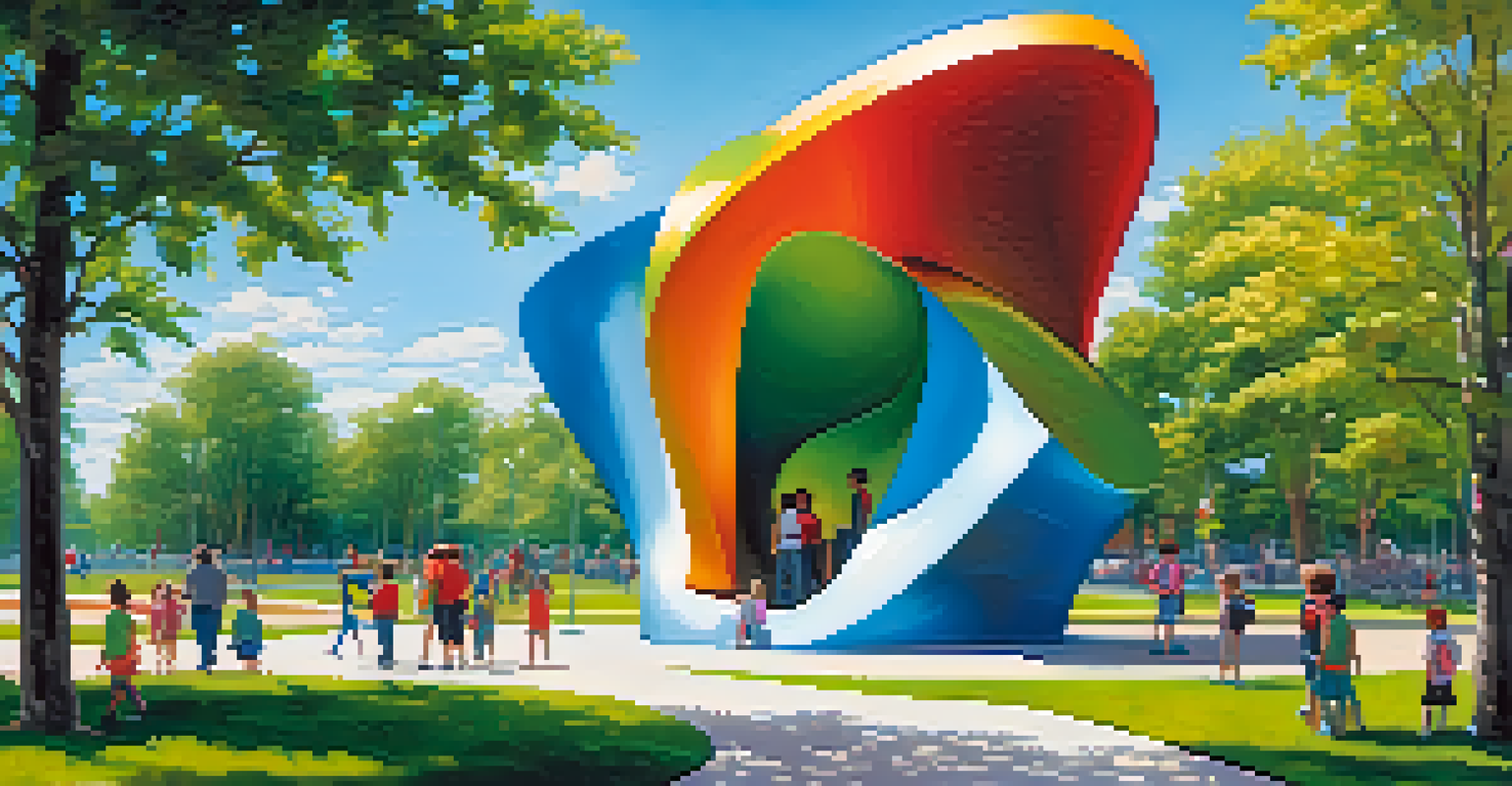Sculpture vs. Carving: The Role of the Artist's Hand and Mind

Understanding Sculpture: A Broader Perspective
Sculpture is an expansive art form that encompasses various techniques and materials. It can be created through molding, assembling, or constructing, making it a versatile medium for artists. Unlike carving, which typically involves removing material, sculpture can also include adding elements to create a cohesive piece.
Sculpture is the art of the intelligence, and carving is the art of the heart.
This diversity allows artists to express their visions in countless ways, from large-scale installations to intricate miniatures. For instance, a sculptor might use metal, glass, or even found objects to create a dynamic work that engages the viewer's senses. The artist's hand plays a crucial role in manipulating these materials, while their mind orchestrates the overall concept.
Ultimately, sculpture serves as a powerful means of communication, inviting viewers to explore themes, emotions, and narratives through three-dimensional forms. The artist's intention shapes the experience, making each piece unique and reflective of their personal journey.
Delving into Carving: A Focused Craft
Carving, on the other hand, is a more specific technique that involves cutting away material to reveal a form. Common materials for carving include wood, stone, and ivory, each requiring a different skill set and approach. The act of carving demands precision and patience, as artists must carefully remove material to avoid error and achieve their desired outcome.

For example, a woodcarver might start with a block of wood and slowly chip away at it, transforming the rough material into a detailed figure or design. This process highlights the artist's hand, as each cut reflects their skill and intention. The mental aspect of carving involves envisioning the final piece and understanding how the material will respond to their tools.
Sculpture's Versatility in Art
Sculpture encompasses various techniques and materials, allowing artists to express their visions in countless ways.
Thus, carving is a dance between the artist's hand and mind, where each movement is deliberate and purposeful. The finished piece not only showcases the artist's technique but also embodies their creative thought process, making it a deeply personal art form.
The Intersection of Mind and Hand in Both Arts
Both sculpture and carving require a harmonious relationship between the artist's hand and mind. While the techniques may differ, the underlying principles of creativity and intent remain the same. Artists in both fields must visualize their concepts and translate them into physical forms, which involves a great deal of planning and foresight.
Every artist dips his brush in his own soul, and paints his own nature into his pictures.
This connection often leads to a state of flow, where the artist becomes completely immersed in their work. In this moment, the hand moves almost instinctively, guided by the vision crafted in the artist's mind. For instance, a sculptor might find themselves lost in the rhythm of shaping clay, while a carver might feel the connection to the stone as they uncover its hidden beauty.
Ultimately, this synergy between hand and mind is what breathes life into both sculpture and carving. It allows artists to convey their emotions and ideas, creating impactful pieces that resonate with audiences on a deeper level.
Materials Matter: The Choice of Medium
The materials chosen for sculpture and carving greatly influence the artistic process and final outcome. Sculptors often have the freedom to experiment with various mediums, such as metal, clay, or even fabric, which allows for diverse textures and forms. This variety encourages innovation and pushes the boundaries of what sculpture can be.
Conversely, carvers are typically more limited to harder materials like wood or stone, which require specific tools and techniques. The density of these materials means that carvers must adapt their methods to achieve the desired results. For example, a stone carver may use chisels and hammers to shape their creation, while a woodcarver might rely on knives and gouges.
Carving: Precision and Patience
Carving involves cutting away material to reveal forms, demanding meticulous skill and a deep understanding of the medium.
Thus, the choice of medium not only defines the technical aspects of each art form but also shapes the artist's creative journey. Understanding the properties of their materials is crucial for both sculptors and carvers, as it directly impacts their ability to express their vision.
The Role of Inspiration and Concept Development
Inspiration plays a vital role in both sculpture and carving, guiding the artist's creative process. This inspiration can stem from personal experiences, nature, culture, or even abstract ideas. For instance, a sculptor might draw inspiration from their surroundings, translating the beauty of a landscape into a three-dimensional form, while a carver may reflect on cultural symbols in their work.
Concept development is essential in both disciplines, as it allows artists to refine their ideas before beginning the physical work. This stage often involves sketching, brainstorming, or even creating small maquettes to explore different possibilities. By visualizing their concepts, artists can better understand how their chosen medium will interact with their vision.
Ultimately, the journey from inspiration to execution is a crucial part of the artistic process. Both sculptors and carvers rely on their unique perspectives and experiences to create pieces that resonate with their audience, making the act of creation a deeply personal endeavor.
Techniques and Tools: Crafting the Final Piece
The techniques and tools used in sculpture and carving are as varied as the artists themselves. Sculptors may employ a range of methods, from additive techniques like modeling to subtractive methods such as casting. Tools can range from simple hands-on instruments to advanced machinery, each offering a unique way to manipulate materials.
In carving, the choice of tools is equally important, as they determine the level of detail and precision achievable. A carver might use chisels, knives, and gouges in their toolkit, each designed for specific tasks. The familiarity with these tools allows the artist to create intricate designs, showcasing their craftsmanship and attention to detail.
Impact of Art on Society
Both sculpture and carving serve significant roles in society, connecting communities and individuals through shared narratives and cultural values.
These techniques and tools are extensions of the artist's hand and mind, enabling them to bring their ideas to life. As they navigate the technical aspects of their craft, artists continue to evolve their skills, pushing the boundaries of what is possible in both sculpture and carving.
The Impact of Sculpture and Carving in Society
Sculpture and carving have long served important roles in society, from commemorating historical figures to expressing cultural values. Public sculptures often become landmarks, inviting reflection and conversation among viewers. For example, a large statue can symbolize a community's heritage and serve as a reminder of shared history.
On a smaller scale, carved pieces can hold personal significance, often passed down through generations as heirlooms. These works of art carry stories and memories, connecting individuals to their roots. They also offer insight into the artist's perspective, allowing audiences to engage with diverse narratives.

Ultimately, both sculpture and carving enrich our cultural landscape, encouraging dialogue and connection. The impact of these art forms transcends their physical presence, as they embody the thoughts and emotions of those who create and experience them.